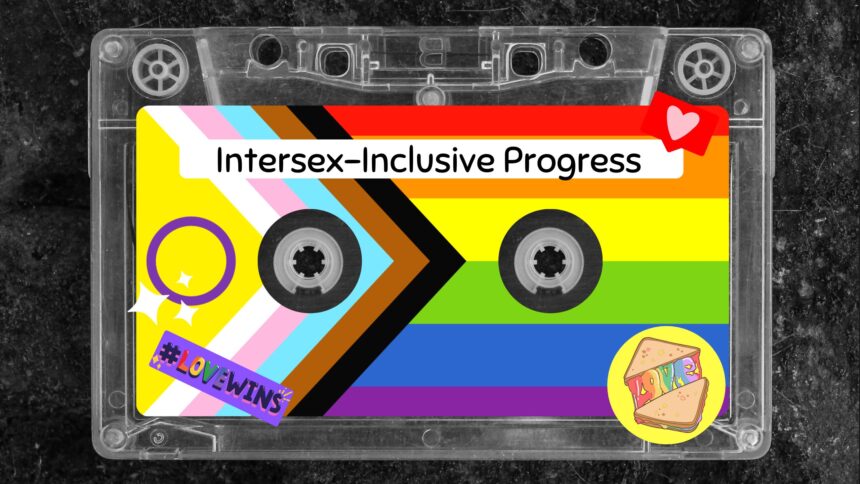The Intersex-Inclusive Progress Pride Flag is one of the most recognized and meaningful symbols of LGBTQIA+ pride today. It represents diversity, inclusion, and the ongoing journey toward equality within the queer community. In Japan—where LGBTQ+ visibility is steadily growing—this flag has become an emblem not only of global solidarity but also of Japan’s evolving understanding of identity and acceptance. This guide explores the meaning, history, and cultural relevance of the Intersex-Inclusive Progress Pride Flag, both globally and in Japan.
The Story Behind the Intersex-Inclusive Progress Pride Flag
The Intersex-Inclusive Progress Pride Flag evolved from earlier versions of the rainbow flag, reflecting an expanding commitment to inclusivity and intersectionality. It symbolizes the ongoing effort to ensure that all identities within the queer spectrum—especially marginalized ones—are recognized and celebrated.
The Origins and Evolution of the Pride Flags
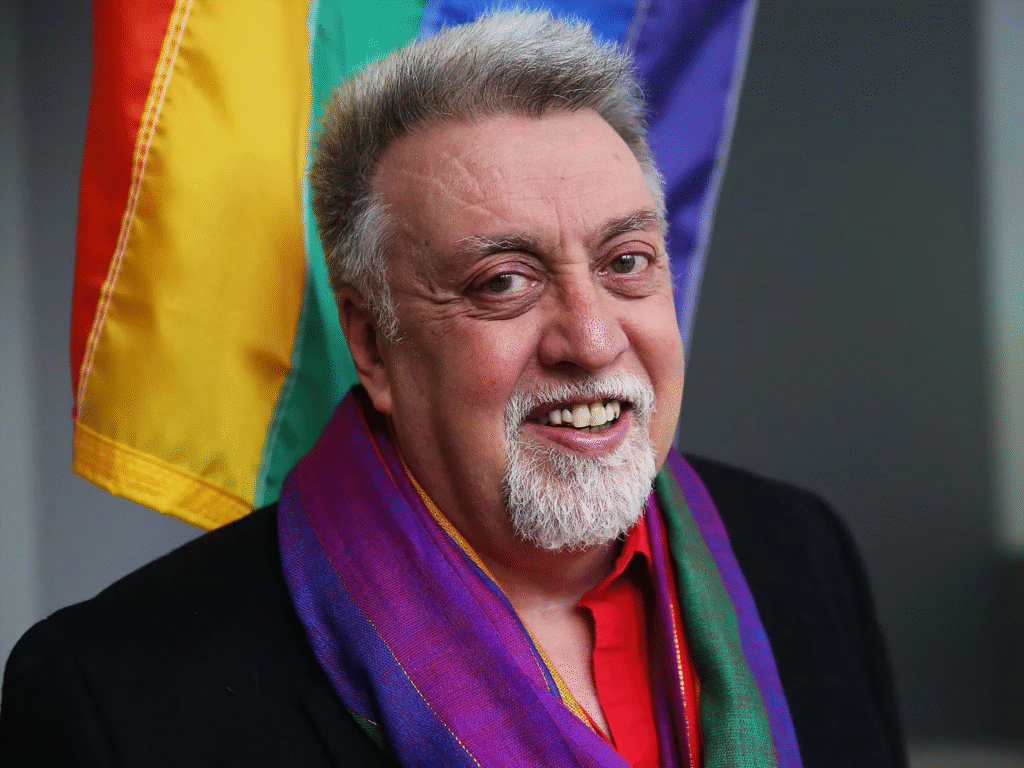
The original rainbow flag was created in 1978 by artist and activist Gilbert Baker, each color representing a unique aspect of life and identity. Red symbolized life, orange healing, yellow sunlight, green nature, blue serenity, and violet spirit.
In 2018, Daniel Quasar introduced the Progress Pride Flag, adding a chevron that included white, pink, and light blue to represent the transgender community, and brown and black to acknowledge people of color and those affected by HIV/AIDS.
Then, in 2021, Valentino Vecchietti of Intersex Equality Rights UK created the Intersex-Inclusive Progress Pride Flag, adding a yellow triangle with a purple circle to represent intersex individuals. This design made the flag one of the most inclusive symbols of LGBTQIA+ identity to date.
Why Inclusion Matters in Pride Flags
Each redesign of the pride flag mirrors the evolution of LGBTQ+ awareness across the world. As new voices emerge and marginalized groups gain recognition, the flag continues to evolve, reflecting both progress and unity. In Japan, the flag’s growing visibility at events such as Tokyo Rainbow Pride and university diversity programs reflects a broader cultural shift toward understanding and representation.
The Meaning Behind Each Element of Intersex-Inclusive Progress Pride Flag
Every color and shape in the Intersex-Inclusive Progress Pride Flag carries symbolic meaning, forming a powerful visual language of diversity and hope. Understanding these meanings deepens appreciation for the struggles and victories the flag represents.
The Original Six Colors of the Rainbow

- Red – Life and Passion Red represents the essence of life and the vibrancy of the human experience. It reminds us of the courage and strength required to live authentically within the LGBTQ+ community.
- Orange – Healing and Resilience Orange stands for the process of healing, both personal and collective. It celebrates the resilience of those who continue to overcome challenges and support one another in their journey.
- Yellow – Light and Energy Yellow symbolizes sunlight and the positive energy that sustains growth and optimism. It highlights the importance of joy and self-expression within queer culture.
- Green – Nature and Growth Green represents renewal, balance, and harmony with nature. It reflects personal growth and the continual evolution of identity and community.
- Blue – Harmony and Peace Blue embodies tranquility and unity. It serves as a reminder of the need for understanding and coexistence across all identities within the LGBTQIA+ spectrum.
- Violet – Spirit and Unity Violet stands for spirituality and connection. It emphasizes the shared humanity that unites everyone in the ongoing pursuit of equality and acceptance.
The Chevron: Progress and Inclusion
The forward-pointing chevron symbolizes momentum and advancement toward a more inclusive future. Its placement on the flag reminds us that there is still work to be done for equality and justice.
- Black and Brown Stripes – These colors honor Black, Brown, and other marginalized people within the LGBTQ+ community. They also memorialize those lost to HIV/AIDS and the continuing fight against stigma and discrimination.
- Light Blue, Pink, and White Stripes – Taken from Monica Helms’s Transgender Pride Flag (1999), these colors represent transgender individuals. They express pride in one’s identity and the courage to live truthfully, no matter the obstacles.
The Yellow Triangle and Purple Circle: The Intersex Addition
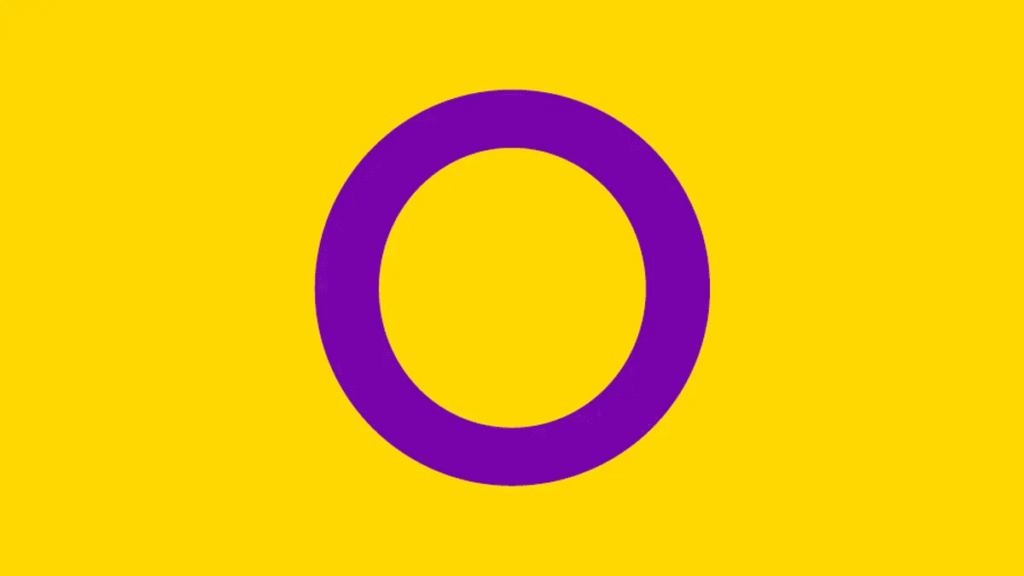
The yellow triangle and purple circle draw from Morgan Carpenter’s 2013 Intersex Pride Flag. Yellow and purple were intentionally chosen as colors that are not associated with traditional gender norms, representing individuality and autonomy.
The purple circle stands for wholeness, integrity, and the right for intersex people to live free from unnecessary medical intervention. Together, these shapes bring visibility and dignity to intersex identities, ensuring that the LGBTQIA+ spectrum truly reflects everyone.
Intersex-Inclusive Progress Pride Flag Related Pride Flags
While the Intersex-Inclusive version is the most comprehensive, several other pride flags contribute to the collective history of visibility and self-expression. Each one tells its own story and adds to the movement for inclusion.
The Intersex Flag
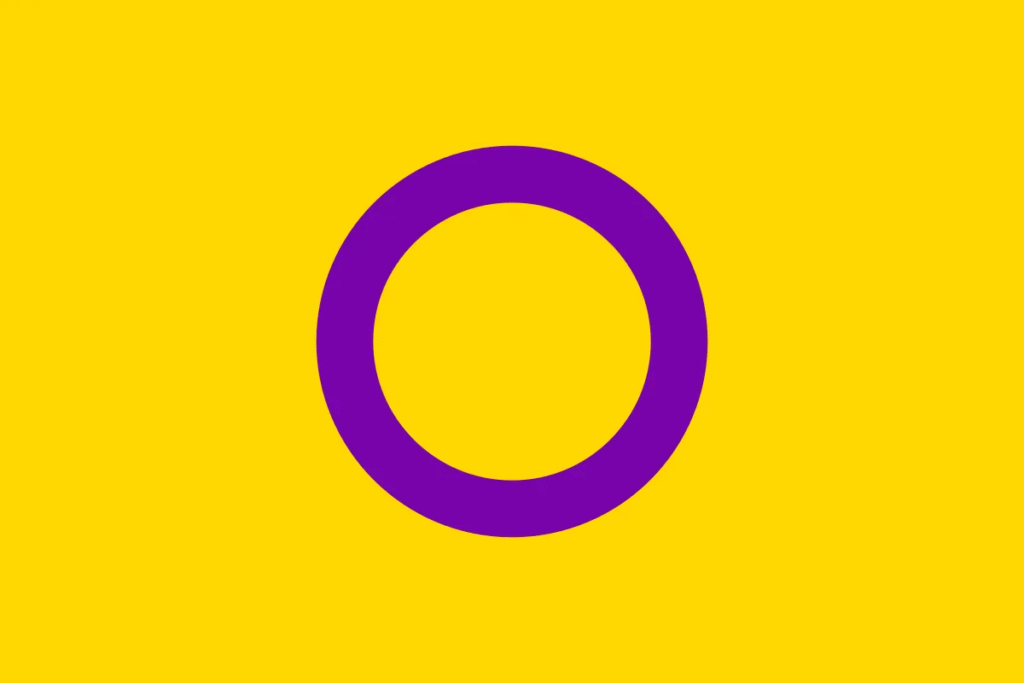
Designed by Morgan Carpenter (2013), the Intersex Flag features a simple purple circle centered on a yellow background. It symbolizes bodily autonomy, integrity, and freedom from societal expectations. The flag’s minimalist design reflects the intersex community’s desire to exist authentically and without alteration.
The Progress Pride Flag
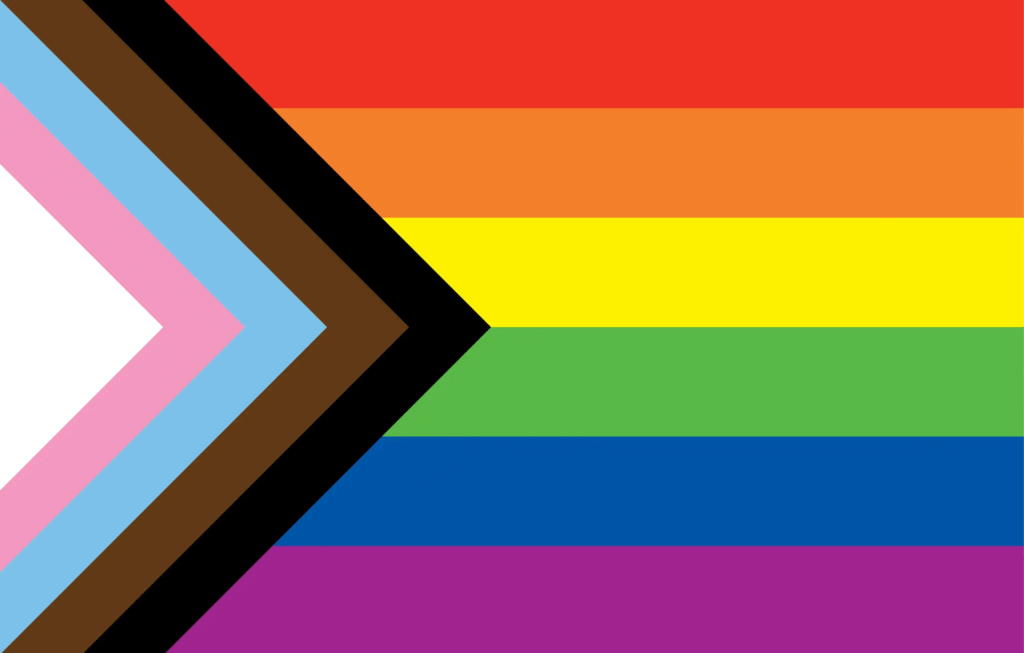
Daniel Quasar’s 2018 design introduced a chevron to the rainbow flag to emphasize inclusion and progress. By highlighting the transgender community and people of color, this flag marked a turning point in visual activism, expanding representation beyond the original rainbow design.
The Transgender Pride Flag
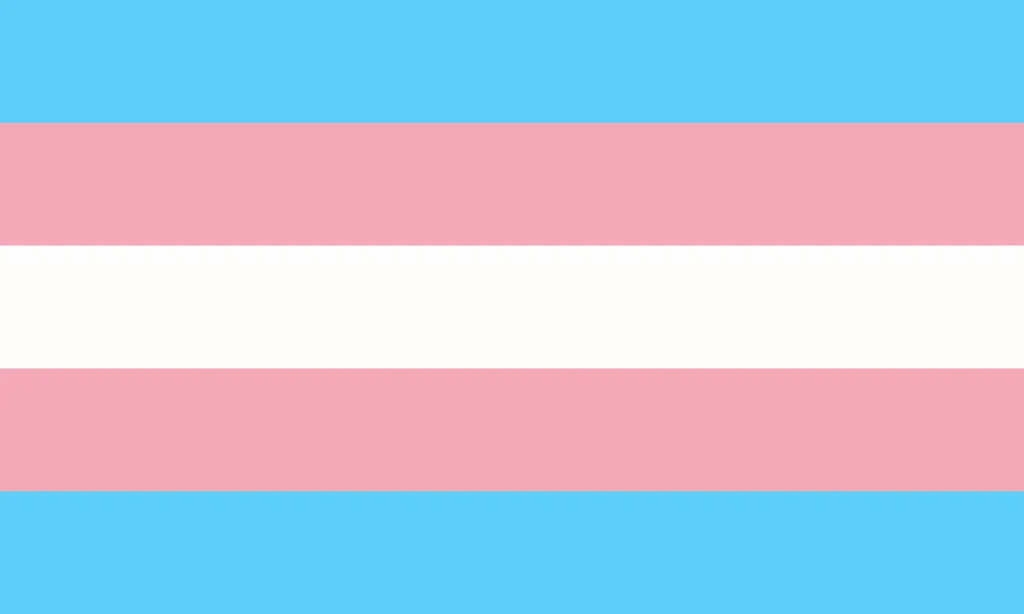
Created by Monica Helms (1999), the Transgender Pride Flag features light blue, pink, and white stripes arranged in a symmetrical pattern. This symmetry symbolizes that no matter how the flag is flown, it remains correct—reflecting the stability and validity of transgender identities.
The Flag’s Global and Japanese Impact
The Intersex-Inclusive Progress Pride Flag has become a global emblem of equality and awareness, recognized across countries and cultures. In Japan, it reflects both international solidarity and the country’s gradual but growing embrace of LGBTQIA+ visibility and inclusion.
Representation in Japan

In Japan, the Intersex-Inclusive Progress Pride Flag has become increasingly visible in recent years. Organizations such as Tokyo Rainbow Pride, Stonewall Japan, and Nijiiro Diversity display it prominently during events and campaigns. Some universities and local governments have also begun using it during diversity initiatives, helping foster greater awareness of gender and sexual diversity nationwide.
Cultural Resonance
Japanese culture often emphasizes harmony (wa) and balance—values that align naturally with the flag’s message of inclusion. The flag’s presence in Japan serves as a bridge between global LGBTQ+ movements and local cultural values. It encourages dialogue, mutual respect, and a sense of shared humanity among both Japanese citizens and international residents.
What Intersex-Inclusive Progress Pride Flag Teaches Us
The Intersex-Inclusive Progress Pride Flag is more than just a design—it’s a living symbol of empathy and solidarity. Its evolving form reminds us that inclusion is not a fixed goal but a continuous process of learning, listening, and embracing differences.
For LGBTQ+ foreigners in Japan, the flag offers a sense of belonging and connection. It unites global and local communities under a shared vision of dignity, representation, and equality.
A Symbol of Unity and Ongoing Progress
From Baker’s original rainbow to Vecchietti’s intersex-inclusive update, the pride flag’s evolution mirrors decades of activism, resilience, and hope. Each color, stripe, and symbol reflects a story of courage and transformation.
In Japan and beyond, the Intersex-Inclusive Progress Pride Flag stands as a reminder that progress is ongoing. To understand its meaning is to embrace a vision of compassion, diversity, and global unity.
